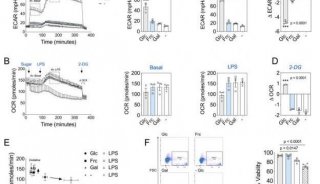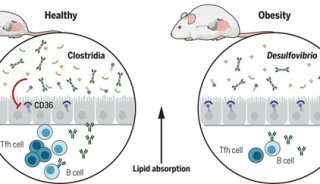抵御肥胖新疗法--肠道味觉受体
尽管抗肥胖药物已经有超过25年的研究历史,但是很少有药物能表现出长期的功效.现在发表于Trends in Endocrinology & Metabolism的一篇新的研究报告指出,靶向肠道中的味道传感器可能是抗击肥胖的一个有前途的新策略。
肠道能品味我们吃到的味道——酸、甜、苦、辣,这基本上与舌头是差不多的,都是通过使用类似的信号机制感受味觉。结果是,当食物到达肠道后,肠道通过激素的释放控制饱腹感和血糖水平.位于胃部的传感器或受体能对过剩的食物摄取产生响应,如果它们发生了故障,则很可能会导致肥胖、糖尿病和相关的代谢状况的发展。
比利时鲁汶天主教大学转化研究中心从事胃肠道功能紊乱研究的Sara Janssen和Inge Depoortere是这项研究的主要参与者,他们检测了这种可能性,为肥胖控制这一课题的研究提供了新的见解.他们说,越来越多的证据暗示,或许我们可以通过选择性地靶向肠道细胞中的味觉受体来避免肥胖和相关疾病的发生发展,即控制它们的激素释放过程,从而控制饱腹感信号.因此我们甚至可以模拟吃过一餐饭后的生理学效应,欺骗身体使之认为已经吃过了食物。
“减肥手术能够有效地带来长久的体重下降,以及糖尿病和其它肥胖相关疾病患病率的减少,到目前为止我们还不清楚其中的内在原因,但是它可能涉及到肠道对激素释放的改变.”Depoortere医生说,“靶向影响激素释放的除嘴巴以外的味觉受体或许能够控制食物的摄取过程,并可能实现已一种非手术的方式模拟减肥手术后的效应。”
当然,我们还需要进一步的研究证明哪种肠道味觉受体有潜力能够成为预防和治疗肥胖和糖尿病的有效药物靶标。
Nutrient sensing in the gut: new roads to therapeutics?
Sara Janssen, Inge Depoortere
The release of gut hormones involved in the control of food intake is dependent on the acute nutritional status of the body, suggesting that chemosensory mechanisms are involved in the control of their release. G protein-coupled taste receptors similar to those in the lingual system, that respond to sweet, bitter, umami, and fatty acids, are expressed in endocrine cells within the gut mucosa, and coordinate, together with other chemosensory signaling elements, the release of hormones that regulate energy and glucose homeostasis. In health, these nutrient sensors are likely to function as inhibitors to excessive nutrient exposure, and their malfunction may be responsible for a variety of metabolic dysfunctions associated with obesity; they may thus be considered as new therapeutic targets.
-
会议会展

-
项目成果

-
项目成果











